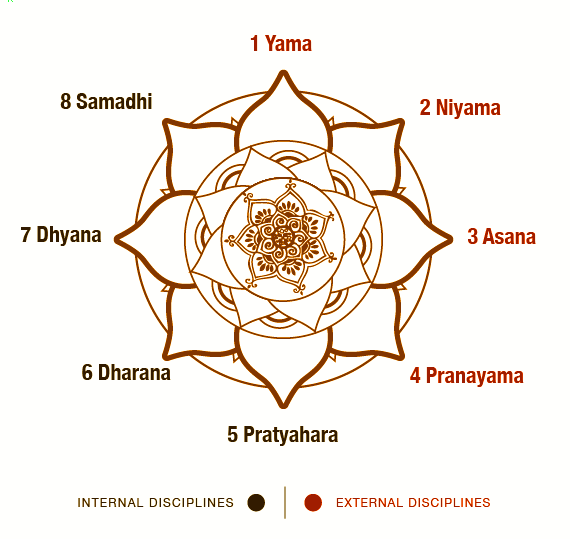Know about Ashtanga Yogaha
The word "Asht-anga," in Sanskrit,
means "eight-limbed." The eight distinct
forms of yoga practice are as below:
“Yama” – Do’s and
Don’ts / Moral restraints
“Niyama” - Discipline
“Asana” - Body Posture /
Practice of postures
“Pranayama” – Vyayama
(Exercise of Breath) / Breath control / Extension
of the breath
“Pratyahara” - An Inward
movement of the senses
“Dharana” - Concentration
“Dhyana” - Meditation
“Samadhi” - Meditative
absorption / bliss
1. Yama - is the first of the 8 limbs and
means “five restraints.” The five
Yamas are ahimsa (non-violence), satya
(truthfulness), asteya (not stealing),
brahmacharya (moderation) and aparigraha (not
hoarding).
2. The rules of Niyama (the Do’s)
are – Cleanliness, Contentment, Austerity,
Self-study or Introspection, Devotion to the
Supreme Lord.
3. Asanas - Improve body balance,
flexibility and strength and help to reduce stress
and conditions related to same.
4. Pranayama - is a complete breathing
exercise that leads towards silence and
awareness.
5. Pratyahara - When the senses do not
require external gratification and this leads to
iternal flow of energy. The 5 Gyan Indriyan, 5
Karma Indriyan and the Mind.
6. Dharana – One point
concentration, this helps to understand, reduce
and remove the osscilations in the mind.
7. Dhyana - Where the mind is silenced and
in meditation.
8. Samadhi – Complete oneness of
body, mind and being.
Ashtanga Yogaha and You
Increased awareness and bliss flows and the being
is in a united sense of rhythm with the
unmanifested. Ashtanga Being able to move at
one's own pace and level is another great
advantage of Ashtanga Yogaha.

